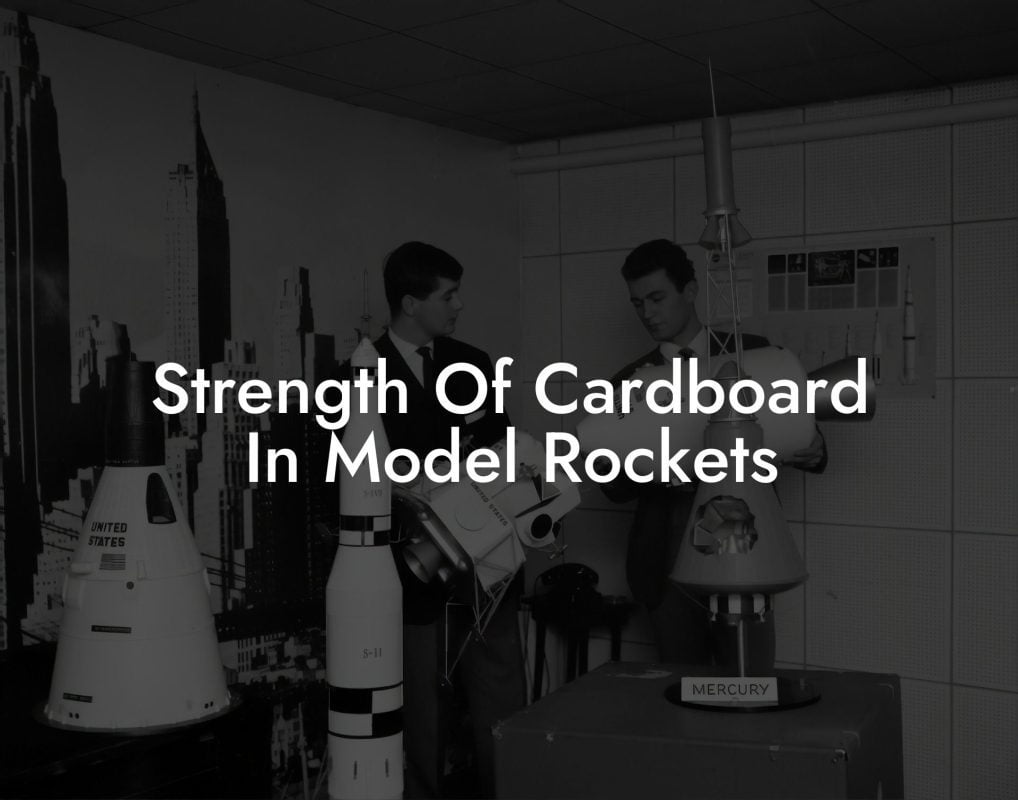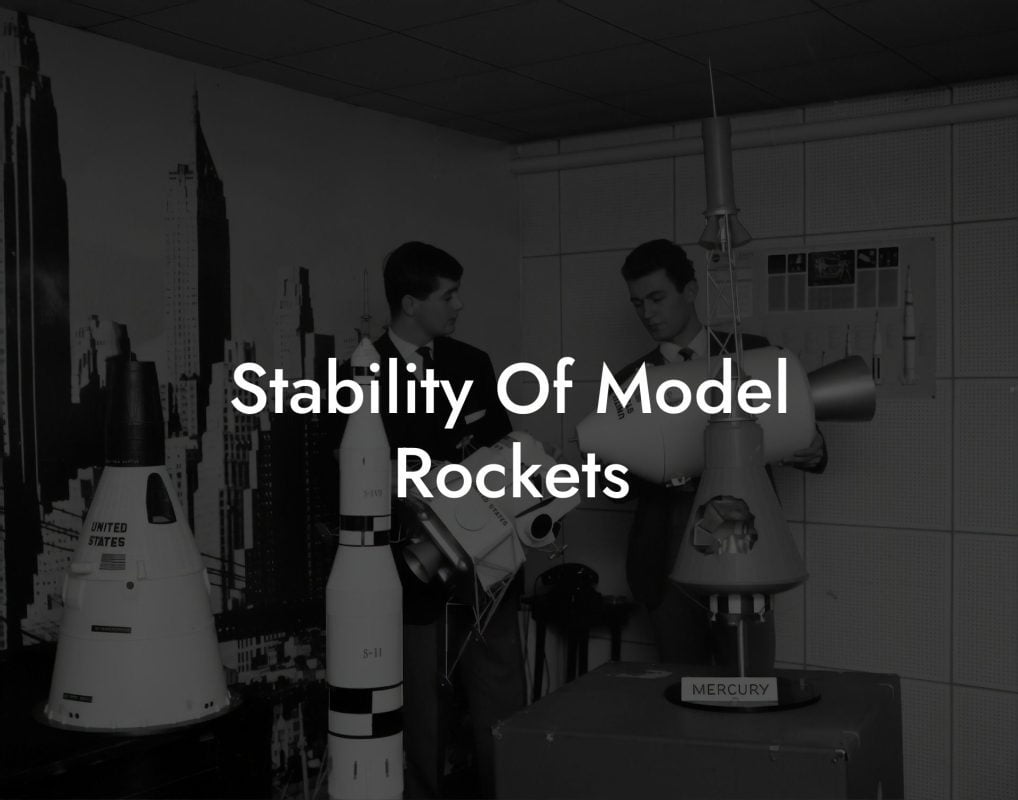Imagine soaring to new heights with your very own model rocket, leaving a trail of excitement and wonder in its wake. Whether you're a seasoned enthusiast or just starting out, the world of model rockets is an exhilarating realm where creativity, science, and adventure converge. In this comprehensive guide, we'll delve into the fascinating realm of model rockets, exploring the intricacies of distance, design, and performance.
Quick Links to Useful Sections
- Understanding Model Rocketry: A Brief History and Basics
- The Science of Distance: Aerodynamics, Thrust, and Drag
- Designing for Distance: Tips and Tricks
- Record-Breaking Rockets: The Quest for Distance
- community and Resources: Join the Model Rocketry Movement
- FAQs: Your Model Rocketry Questions Answered
- Embark on Your Model Rocketry Journey
Understanding Model Rocketry: A Brief History and Basics
Before we dive into the world of distance and performance, let's take a step back and explore the origins of model rocketry. From its humble beginnings in the early 20th century to the modern era of advanced materials and computer-aided design, model rocketry has evolved significantly over the years.
A model rocket typically consists of a few key components: the body tube, fins, nose cone, recovery system, and motor. The motor, which provides the thrust, is usually the most critical element in determining a rocket's distance and performance.
The Science of Distance: Aerodynamics, Thrust, and Drag
When it comes to achieving maximum distance, understanding the fundamental principles of aerodynamics, thrust, and drag is crucial. Aerodynamics plays a vital role in reducing air resistance, while thrust generated by the motor propels the rocket upward. Drag, on the other hand, slows the rocket down, making it essential to optimize the design for minimal air resistance.
Factors such as nose cone shape, fin design, and body tube material all impact a rocket's aerodynamics. By carefully selecting and designing these components, model rocket enthusiasts can significantly increase their rocket's distance and overall performance.
Looking For The Best Model Rocket Kits? You'll Love These:
Designing for Distance: Tips and Tricks
So, what sets apart a high-performing model rocket from a mediocre one? Here are some expert tips and tricks to help you design and build a rocket that soars to new heights:
- Nose Cone Optimization: Experiment with different nose cone shapes and materials to reduce air resistance and maximize distance.
- Fin Design and Placement: Strategically place and design fins to improve stability and reduce drag.
- Lightweight Materials: Use lightweight yet durable materials for the body tube and other components to minimize weight and maximize distance.
- Motor Selection: Choose a motor that provides the optimal balance of thrust and efficiency for your rocket's design.
Record-Breaking Rockets: The Quest for Distance
For the truly ambitious, the pursuit of distance records is a thrilling challenge. From the Guinness World Record for the highest altitude achieved by a model rocket to the longest duration flight, there are numerous records waiting to be broken.
Meet some of the pioneers and innovators who have pushed the boundaries of model rocketry, achieving incredible distances and inspiring a new generation of enthusiasts.
community and Resources: Join the Model Rocketry Movement
Model rocketry is a vibrant community of enthusiasts, innovators, and explorers. Join online forums, attend local meetups, and participate in competitions to connect with like-minded individuals and learn from their experiences.
From tutorials and guides to software and simulations, there are numerous resources available to help you improve your skills and take your model rocketry to the next level.
FAQs: Your Model Rocketry Questions Answered
Got questions about model rocketry? We've got answers! Here are some frequently asked questions and their responses:
1. What is the highest altitude achieved by a model rocket?
The current Guinness World Record for the highest altitude achieved by a model rocket is 35,814 meters (117,560 ft).
2. How do I choose the right motor for my rocket?
Select a motor that provides the optimal balance of thrust and efficiency for your rocket's design, taking into account factors such as weight, size, and desired altitude.
3. What safety precautions should I take when launching a model rocket?
Always follow safety guidelines and best practices when launching a model rocket, including wearing protective gear, ensuring a safe launch site, and avoiding launching near people or animals.
Embark on Your Model Rocketry Journey
With this comprehensive guide, you're ready to take your model rocketry skills to new heights. Whether you're a seasoned enthusiast or just starting out, the world of model rockets is full of excitement, adventure, and endless possibilities.
Join the community, experiment with new designs, and push the boundaries of distance and performance. The sky's the limit – or rather, the edge of the atmosphere!
Looking For The Best Model Rocket Kits? You'll Love These:
Useful Interruption: Dive deeper into the world of Model Rockets with our most popular sections. If there is anything you think is missing or anything you would love for us to write about, just give us a shout.
- Getting Started & Basics With Model Rockets
- Model Rocket Design, Build & Customization
- Model Rocket Propulsion & Engine Technology
- Model Rocket Launch Techniques & Recovery
- Model Rocket Advanced Rocketry & Innovations
- Model Rocket DIY and Customization
- Model Rocket Equipment Reviews & Digital Tools
- Community, Competitions & Education
- Model Rocket Troubleshooting & FAQs
- Model Rocket Bonus/Seasonal & Niche Topics
A group of model rocket enthusiasts gathered at a field for their weekly launch event. Among them was Dave, a seasoned builder known for pushing the limits of hobby rocketry. This time, he had outdone himself.
“Ladies and gentlemen,” Dave announced, dramatically pulling a cloth off his latest creation, “I present to you: The Kraken!”
The crowd gasped. This wasn’t just a model rocket—it was a monster. The thing stood 8 feet tall, had six clustered engines, and was covered in enough duct tape to qualify as a classified aerospace project.
“Dave,” muttered Steve, the cautious safety officer, “Have you, uh… done the math on this?”
“Math?” Dave scoffed. “I built it in my garage at 3 a.m. with parts from eBay. This is an art piece, Steve.”
The countdown began.
5…
4…
3…
2…
1…
The engines ignited with a BOOM, and The Kraken shot up… kind of. It immediately did a violent barrel roll, narrowly missing the spectators before skyrocketing at an angle that could only be described as “legally questionable.”
The crowd collectively ducked as The Kraken flew straight over the adjacent cornfield, where Old Man Jenkins, the grumpiest farmer in town, was minding his business.
KABOOM!
The rocket disappeared behind the barn. A moment later, a flaming piece of Estes igniter wire landed at Steve’s feet. The silence was deafening.
And then—an unmistakable sound echoed across the field.
Jenkins’ shotgun being cocked.
“DAVE!!!” Steve shouted. “RUN.”
And that was the day Dave invented the first-ever biologically powered rocket booster: pure adrenaline.
To this day, nobody knows where The Kraken landed, but legend has it, it still haunts the skies, terrifying unsuspecting drones and low-flying birds.















